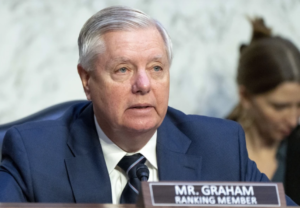Trump’s Tariff Authority Under Legal Scrutiny
The recent ruling by the U.S. Court of International Trade (CIT) has ignited a significant debate over the extent of presidential authority in imposing tariffs under the International Emergency Economic Powers Act (IEEPA). The court’s decision to invalidate President Trump’s “Liberation Day” tariffs has far-reaching implications for U.S. trade policy, executive power, and the global economy.
1. The CIT’s Ruling on “Liberation Day” Tariffs
On May 28, 2025, the CIT ruled in V.O.S. Selections v. United States that President Trump’s sweeping tariffs exceeded the authority granted under IEEPA. The court emphasized that IEEPA does not permit the imposition of “unbounded” tariffs without clear congressional authorization.
The decision specifically targeted the “Liberation Day” tariffs, which imposed duties on a broad range of imports from countries like China, Mexico, and Canada. These tariffs were justified by the administration as necessary to combat national emergencies related to trade imbalances and foreign policy concerns.
2. Legal Precedents and Executive Authority
The court’s ruling draws a distinction between the current tariffs and historical precedents. For instance, President Nixon’s 1971 tariffs under the Trading with the Enemy Act were upheld due to the specific statutory language and context.
Critics argue that the CIT’s interpretation undermines the president’s ability to respond swiftly to national emergencies. They contend that IEEPA’s language grants the executive branch considerable leeway in regulating international commerce during crises.
3. Economic Implications of the Ruling
The invalidation of the tariffs has introduced uncertainty into global markets. Businesses reliant on international supply chains face challenges in adjusting to the rapidly changing trade landscape.
Moreover, the temporary reinstatement of the tariffs by the U.S. Court of Appeals has added to the volatility. Companies are now navigating a complex environment where trade policies can shift dramatically based on ongoing legal proceedings.
4. Political Reactions and Future Outlook
The Trump administration has expressed strong opposition to the CIT’s decision, warning of potential economic consequences if the tariffs are permanently removed. Supporters argue that the tariffs are essential tools for protecting American industries and addressing unfair trade practices.
Conversely, opponents view the ruling as a necessary check on executive overreach. They advocate for a more balanced approach to trade policy, emphasizing the role of Congress in authorizing significant economic measures.
5. Broader Impacts on International Trade Relations
The legal challenges to the tariffs have strained relationships with key trading partners. Countries affected by the duties have expressed concerns over the unpredictability of U.S. trade policy.
Additionally, the situation has prompted discussions about the need for clearer guidelines on the use of emergency powers in economic matters. Policymakers are considering reforms to ensure that future trade actions are grounded in transparent and accountable processes.
Conclusion: Navigating the Intersection of Law and Trade Policy
The CIT’s decision marks a pivotal moment in the ongoing discourse on the balance between executive authority and legislative oversight in trade matters. As the legal battles continue, stakeholders across the spectrum must grapple with the complexities of crafting trade policies that are both effective and constitutionally sound.
For continuous updates on this evolving story and more, subscribe to trusted news sites like USnewsSphere.com.
[USnewsSphere.com / reu.]





